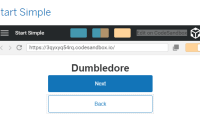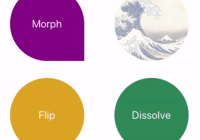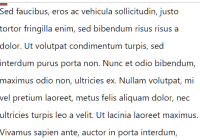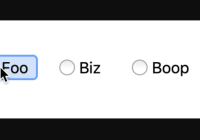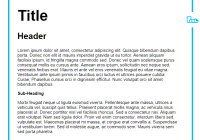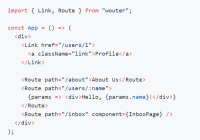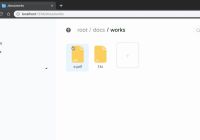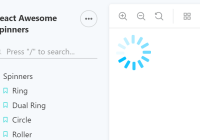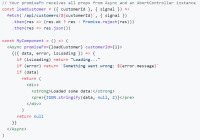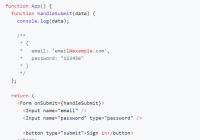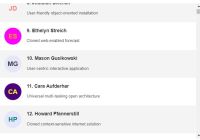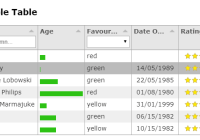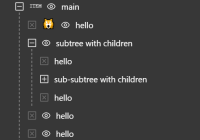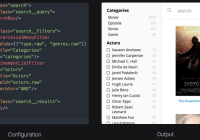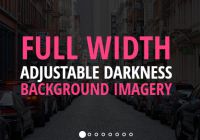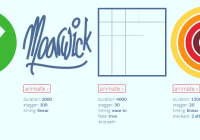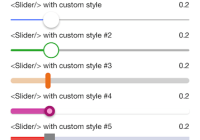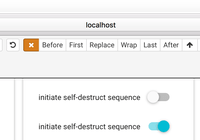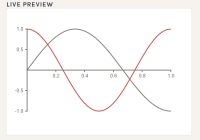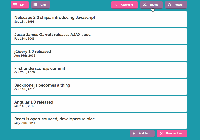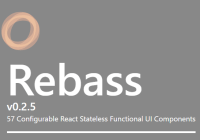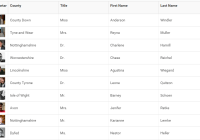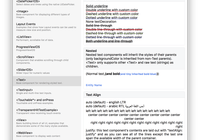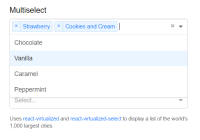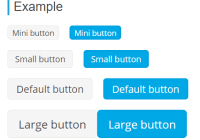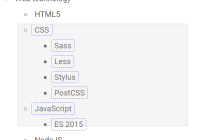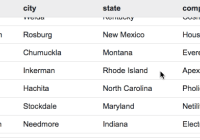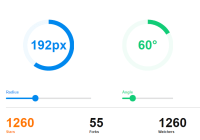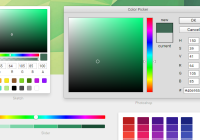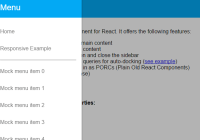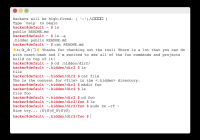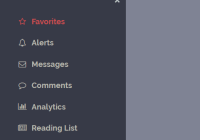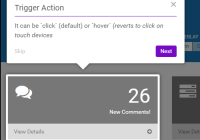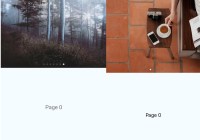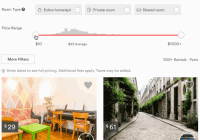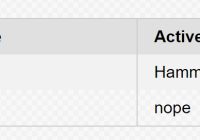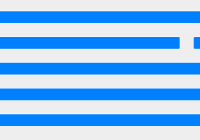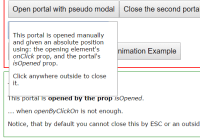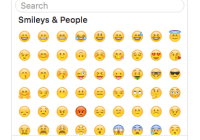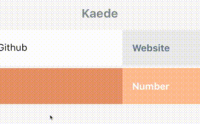nano-component
Fast & simple React component styles in under 1kb
http://jxnblk.com/nano-component/
npm i nano-componentimport nano from 'nano-component' const Button = nano('button')({ fontFamily: 'inherit', fontSize: 14, display: 'inline-block', margin: 0, padding: 16, border: 0, borderRadius: 4, color: 'white', backgroundColor: 'tomato', appearance: 'none', ':hover': { backgroundColor: 'black' }, '@media screen and (min-width: 32em)': { fontSize: 16, } })About
Inspired by libraries like styled-components, glamorous, and emotion, nano-component is a bare-bones css-in-js library for easily creating styled React UI components.
Motivation
Encapsulating styles in UI components is a great way to build consistent, scalable UI, and using JavaScript to manage these styles makes a lot of sense for large applications with dozens of contributors. While native JavaScript provides some great low-level APIs for managing styles, libraries that interact with these APIs tend to add a lot of features that add complexity and a performance penalty for what should be a fairly straightforward task.
Perfection is attained not when there is nothing more to add, but when there is nothing more to remove.
– Antoine de Saint Exupéry
Nano component comes from a desire to show that dynamically injecting CSS with JavaScript is not that complicated. In 47 lines of code, this library provides dynamically rendered, encapsulated styles that can be computed from component props.
Features
- 0.8 kB gzipped
- 47 LOC
- Fast
- Simple API
- Extensible
- Use JavaScript objects for styling
- Pseudoclasses
- Media queries
- Child selectors
- Atomic code deduplication
- No build steps or configuration required
Dynamic Styles
To dynamically adjust styles based on props, pass a function to nano-component.
const Heading = nano('h2')(props => ({ color: props.color })) // <Heading color='tomato'>Hello</Heading>Multiple Styles
Multiple arguments can be passed to nano components to help break up logic.
const color = props => ({ color: props: color }) const margin = props => ({ margin: props.margin }) const Heading = nano('h2')( color, margin )Number Values
Any number value will be converted to a pixel value, regardless of which CSS property it's applied to. Unlike other libraries that use a blacklist of CSS properties, nano component does not handle number values differently based on property. This is to both keep the library size to a minimum and to ensure a more deliberate API. To avoid adding pixels to unitless numbers, provide those values as strings.
const Heading = nano('h2')({ marginTop: 32, // converted to pixels marginBottom: 8, lineHeight: '1.5' // a unitless valueExtending Components
Other React components can be passed to nano-component to add styles, as long as that component that accepts className as a prop – for example, react-router's Link component.
import { Link } from 'react-router' import nano from 'nano-component' const NavLink = nano(Link)({ textDecoration: 'none', fontWeight: 'bold', color: 'inherit' })styled-system
The styled-system library can be used with nano-component
import nano from 'nano-component' import { space, width } from 'styled-system' const Box = nano('div')(space, width)Setting Props
To add props to a component, use the same .defaultProps object you would use on any other React component.
const Heading = nano('h2')(props => ({ fontSize: 32, color: props.color })) Heading.defaultProps = { color: 'tomato' }Removing Props
To remove unwanted style props from the root HTML element, use a higher order component like tag-hoc or recompose's mapProps utility. This avoids any use of whitelisting or assumptions about which props should be passed to the underlying component.
import nano from 'nano-component' import tag from 'tag-hoc' const H2 = tag([ 'color' ])('h2') const Heading = nano(H2)(props => ({ color: props.color }))import nano from 'nano-component' import { mapProps } from 'recompose' const H2 = mapProps(props => Object.assign({}, props, { color: null }))('h2') const Heading = nano(H2)(props => ({ color: props.color }))Sharing Styles
Importing shared, thematic constants can help manage UI styles in a more explicit way than anything possible with CSS.
import nano from 'nano-component' import { colors } from './theme' const Heading = nano('h2')({ color: colors.slate })Theming
The theming library can be used to add styled-components-like theming to a nano component.
import { withTheme } from 'theming' const Heading = nano('h2')(props => ({ fontSize: props.theme.fontSizes[4] })) export default withTheme(Heading)import React from 'react' import { ThemeProvider } from 'theming' import theme from './theme' import Heading from './Heading' const App = props => ( <ThemeProvider theme={theme}> <Heading> Hello </Heading> </ThemeProvider> )Benchmarks
nano-component does not have as many features as other similar libraries, but when run against similar benchmarks, nano-component tends to perform slightly better. See the benchmarks directory for more.
nano-component x 3,742 ops/sec ±4.87% (70 runs sampled) emotion x 3,044 ops/sec ±9.99% (75 runs sampled) glamorous x 2,151 ops/sec ±10.91% (74 runs sampled) styled-components x 1,748 ops/sec ±3.84% (71 runs sampled) nano-component x 3,357 ops/sec ±5.91% (70 runs sampled) emotion x 2,714 ops/sec ±3.04% (73 runs sampled) glamorous x 2,013 ops/sec ±3.87% (69 runs sampled) styled-components x 1,611 ops/sec ±5.12% (67 runs sampled) nano-component x 3,553 ops/sec ±4.16% (73 runs sampled) emotion x 2,764 ops/sec ±4.63% (67 runs sampled) glamorous x 1,922 ops/sec ±6.36% (68 runs sampled) styled-components x 1,657 ops/sec ±5.09% (72 runs sampled) | library | gzip size |
|---|---|
| nano-component | 0.79 kB |
| emotion | 2.42 kB |
| glamorous | 7.95 kB |
| styled-components | 13.8 kB |
Limitations
Static/Server Rendering
While nano components will render in Node.js environments, the styles are only created in client-side environments. This means that nano components can be used for universal rendering, but will not receive styles until rendered with client-side JavaScript. Generally this is an acceptable tradeoff for SEO purposes.
Keyframes & Animations
While nano-component does not provide a mechanism for defining keyframes, predefined animations can be used in nano components.
/* CSS file */ @keyframes spin { from { transform: rotate(0deg); } to { transform: rotate(360deg); } }import Ring from './Ring' const Loading = nano(Ring)({ animationName: 'spin', animationDuration: '1s', animationTimingFunction: 'linear', animationIterationCount: 'infinite' })Related
MIT License




